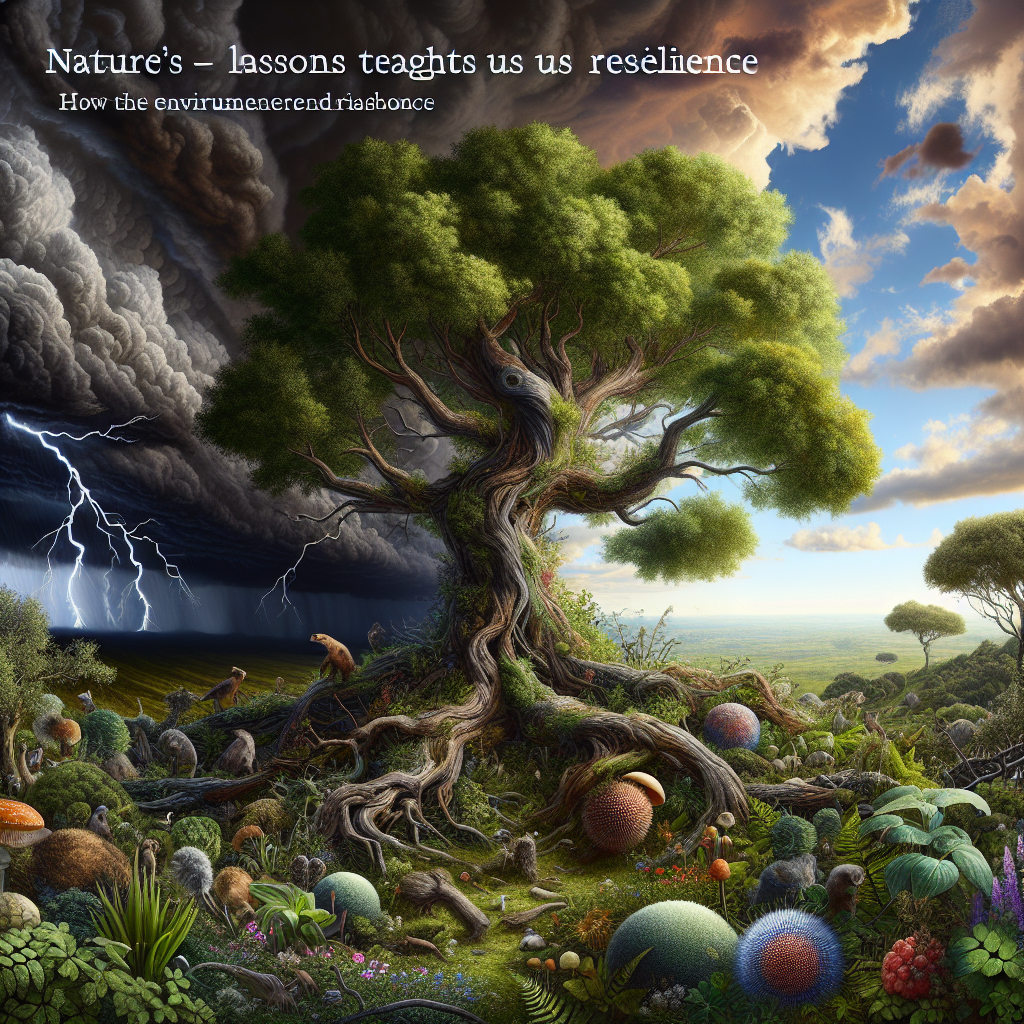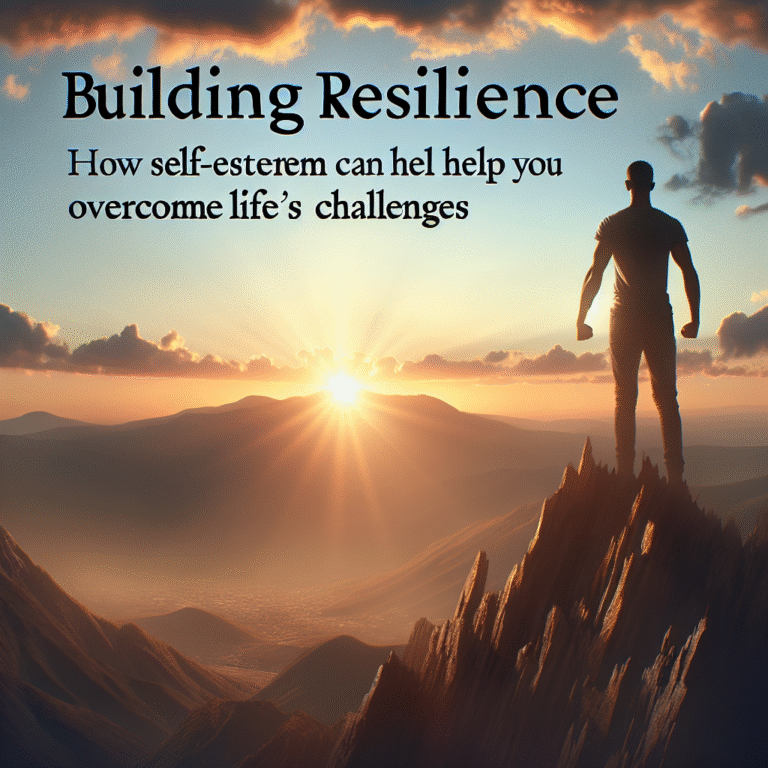
Introduction
Imagine standing at the edge of an ancient forest, where towering trees endure storm after storm with grace and strength. Nature, in its unyielding beauty, isn’t just a backdrop to our lives; it’s a profound teacher. The concept of resilience—our ability to recover from adversity—is deeply woven into the fabric of the natural world. From the way plants adapt to harsh climates to how ecosystems recover from disasters, Nature’s Lessons: How the Environment Teaches Us Resilience resonates in every corner of our planet. This article delves into those powerful lessons, illustrating how observing and learning from nature can equip us with the tools to face our personal challenges.
The Power of Adaptation
Understanding Adaptation in Nature
Adaptation is the cornerstone of resilience in the natural world. Consider the polar bear, which has evolved over centuries to survive extreme arctic conditions. Its thick fur and fat layer are not just features; they are crucial adaptations that allow it to regulate body temperature and thrive where few others can. Similarly, plants in deserts have developed deep root systems to access water, showcasing nature’s remarkable ability to endure.
Case Study: The Resilience of the Joshua Tree
The Joshua Tree, unique to the Mojave Desert, illustrates the essence of adaptation. These trees can survive in harsh conditions, thriving on limited rainfall and extreme temperatures. During times of drought, they conserve water and maximize photosynthesis. This resilience is not just about survival; it’s about thriving under pressure.
Analysis: The Joshua Tree teaches us that endurance doesn’t require a luxurious environment. Like the Joshua Tree, we too can learn to thrive in challenging circumstances by adapting our strategies and mindsets.
Table: Examples of Adaptation in Nature
| Organism | Adaptation Mechanism | Environment |
|---|---|---|
| Polar Bear | Thick fur & fat deposits | Arctic Regions |
| Cacti | Water storage capabilities | Deserts |
| Mangroves | Salt filtration systems | Coastal intertidal zones |
| Salmon | Life cycle migration | Freshwater to saltwater |
The Cycle of Renewal
The Importance of Renewal in Ecosystems
Ecosystems thrive on cycles of renewal. After a forest fire, for example, many trees release seeds that depend on the fire’s heat to germinate. This natural process underscores a vital lesson: sometimes destruction clears the way for new growth.
Case Study: The Aftermath of the Yellowstone Fire
In 1988, Yellowstone National Park experienced one of its largest wildfires, burning over 1.2 million acres. Initially seen as a catastrophe, the fire set the stage for regeneration. Lodgepole pine trees, which require fire to germinate, flourished, leading to a rebirth of the ecosystem.
Analysis: The recovery of Yellowstone post-fire teaches us that trauma can often lead to unexpected opportunities for growth. In our lives, moments of hardship can pave the way for fresh starts, pushing us toward personal evolution.
Community Resilience in Ecosystems
The Role of Biodiversity
Biodiversity is nature’s insurance policy. Diverse ecosystems are more resilient because they can maintain functionality despite changes and disturbances. This principle extends to human communities: those who are more diverse in skills, backgrounds, and ideas are often more robust in the face of adversity.
Case Study: Coral Reefs and Their Resilience
Coral reefs, known as the rainforests of the sea, demonstrate community resilience. They consist of complex interactions among numerous species, which create a balanced ecosystem. Some reefs have shown surprising resilience to bleaching events triggered by climate change, primarily because of their genetic diversity.
Analysis: The resilience of coral reefs invites us to value the diversity in our own communities. By fostering inclusivity and collaboration, we enhance our collective strength and adaptability, much like a thriving reef.
Chart: Biodiversity and Ecosystem Resilience
| Ecosystem Type | Biodiversity Level | Resilience Score |
|---|---|---|
| Coral Reef | High | 9/10 |
| Rainforest | Very High | 10/10 |
| Monoculture Farm | Low | 4/10 |
| Urban Areas | Moderate | 6/10 |
Lessons from Resilience in Nature
Building Personal Resilience
Just as ecosystems teach us about resilience, our personal lives are filled with opportunities to apply these lessons. By observing the ways nature endures and adapts, we can develop our resilience strategies.
Embrace Change: Nature doesn’t resist change; rather, it harnesses it. In our lives, being open to change allows us to adapt and grow.
Foster Connections: Like ecosystems, our strength lies in our connections with others. Building supportive relationships helps us retrieve and return to our core when life gets tough.
- Practice Self-Care: Nature thrives on multifaceted relationships. Just as plants require sunlight, water, and nutrients, we too need proper care to flourish.
Real-World Application: Nature-Based Strategies for Resilience
Forest Therapy: Immersive experiences in forests have been shown to reduce stress and promote mental well-being. This practice teaches us the importance of taking time for ourselves.
Eco-Therapy: Engaging with nature can help individuals overcome anxiety and depression. The restorative effects of nature support our emotional resilience.
- Nature Journaling: Observing and documenting nature encourages mindfulness and reflection, which are critical components of personal resilience.
Conclusion
As we journey through our lives, the wisdom embedded in Nature’s Lessons: How the Environment Teaches Us Resilience offers us profound insights. The natural world, with its cycles of adaptation, renewal, and interconnectedness, provides a rich tapestry of lessons applicable to our personal and communal resilience.
By embracing these lessons, we can cultivate our growth and learn to navigate the complexities of life with grace and strength. The next time you find yourself faced with a challenge, remember the enduring nature of the Joshua Tree, the thriving coral reefs, and the majestic resilience of Yellowstone. Our environment is calling us to listen, learn, and grow stronger.
FAQs
1. What does resilience mean in a personal context?
Resilience is the ability to bounce back from challenges, adapt positively to change, and maintain well-being during difficult times.
2. How can I enhance my personal resilience?
You can enhance resilience by fostering connections, embracing change, taking care of your mental health, and learning from past experiences.
3. Are there specific strategies based on nature that I can implement?
Yes, strategies include engaging in forest therapy, eco-therapy, and nature journaling, all of which encourage mindfulness and emotional well-being.
4. Can observing nature truly impact my mental health?
Absolutely! Nature has restorative effects on mental health, reducing stress and anxiety while promoting overall well-being.
5. How does biodiversity contribute to community resilience?
Higher biodiversity within a community can lead to increased adaptability and safety nets for individuals, thereby enhancing resilience in facing challenges.
By exploring and embracing Nature’s Lessons: How the Environment Teaches Us Resilience, we gain powerful tools to foster our personal and collective strength in an ever-changing world.
















